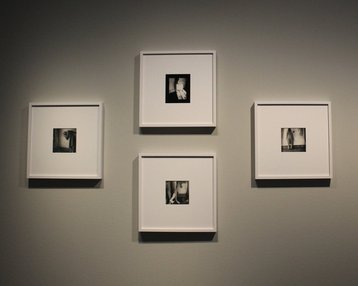
Students gain an inside perspective to write for the outside
Students gain an inside perspective to write for the outside

For the module and practical project “Writing About Art Exhibitions in a Globalized World”, the instructor Hili Perlson and the group of Creative Industries Management students were unfortunately bound to online teaching due to the recent pandemic. However, they made the best of this by diving straight into exploring the hidden dynamics behind the global phenomenon of booming art exhibitions. Perlson shared her broad experience that she has as a writer, editor, critic, and lecturer specializing in art and contemporary culture; she was an editor of Artnet News, and her writing appeared in Artforum, Art in America, Galerie Magazine, The Financial Times, Frieze, Harper’s Bazaar Art, The New York Times, Metropolis M, South China Morning Post, Vogue.com, and Zoo Magazine, as well as in numerous exhibition catalogues.
What are art exhibitions comprised of? Why are galleries and exhibitions so important as a cultural experience? What does this change from physical experience to virtual experience mean for the richness of our understanding? Unfortunately, the spatial component of an artistic institution has been taken away from us. However, by using what is at disposal –Zoom for example – we can elicit more authentic content from the artistic, discussing their works. What helpful resources are currently available to us during these times of limited freedom, to continue to explore culture? Virtual galleries and viewing rooms have become an effective way to view art in a time like this.
The students explored works from artists with different, mixed backgrounds: Jewish American (Nicole Eisenman), Black-American (James Kerry Marshall & Kara Walker), Taiwanese-American (Lee Mingwei), and Vietnamese-German (Sung Tieu). This ensured the students tried not only to navigate cultural sensitivities, but also employ them to create a better understanding for the reader and viewer. They also kept in mind that while it is certainly necessary to visually describe the artworks and space, the parts of their identity and message the artist puts behind their work are equally, if not more, important.
With an equal input from all class participants, the instructor worked to build up and edit reviews collaboratively. The class also asked students to individually research artists being explored in class, and gain a unique perspective that they could use as a base for their review. The final assessment for the class required students to visit a gallery or exhibition of their choice (even virtually, if that’s what they preferred) and write a review about it. The participants for example chose a Francesca Woodman retrospective at the C/O Berlin, a Monet retrospective at the Museum Barberini in Potsdam and a David Hockney retrospective at the Bucerius Kunstforum in Hamburg. This allowed the students to employ their own likes and go further in depth in their thinking and writing about artworks, keeping in mind key features like spatial design and other important contextual features.
Text: Aariya Talcherkar

Professorin für Medien- & Kommunikationsmanagement, Studiengangsleiterin B.A. Creative Industries Management (CIM) und M.A. International Management - Creative Leadership, Direktorin des Institut für Weiterbildung in der Kreativindustrie (IWK)